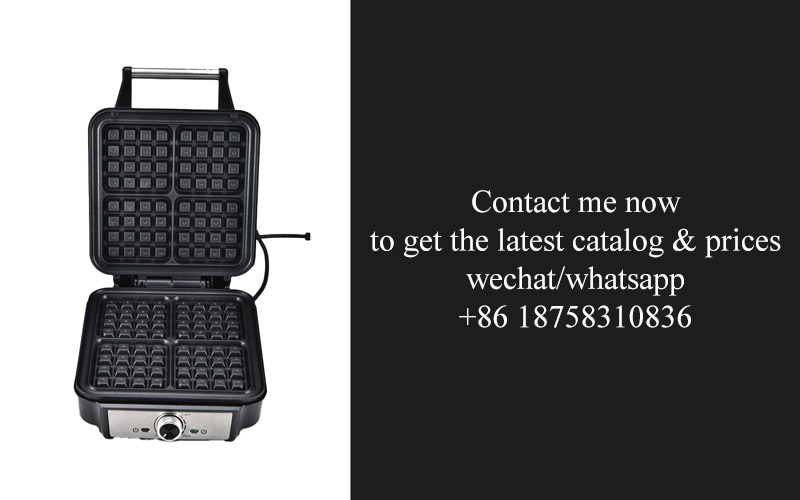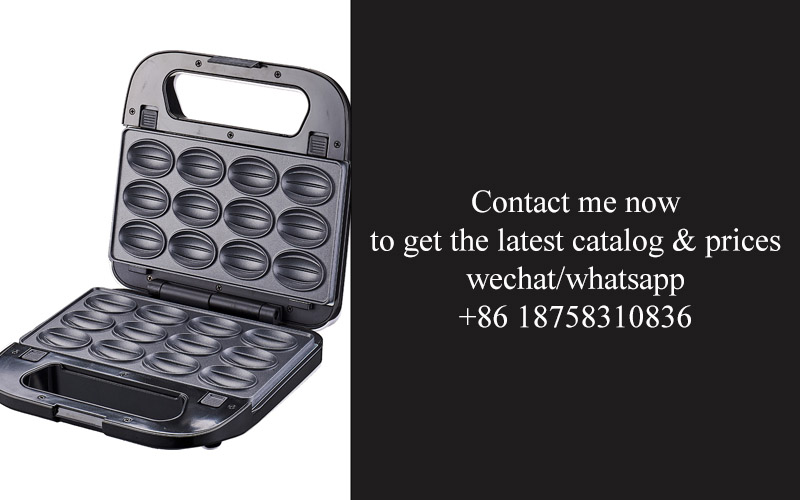Address
304 North Cardinal
St. Dorchester Center, MA 02124
Work Hours
Monday to Friday: 7AM - 7PM
Weekend: 10AM - 5PM
Address
304 North Cardinal
St. Dorchester Center, MA 02124
Work Hours
Monday to Friday: 7AM - 7PM
Weekend: 10AM - 5PM

As the demand for unique and tailored kitchen appliances continues to soar, the role of in-house mold making has emerged as a pivotal factor in shaping the future of grill design. This article delves into the transformative impact of in-house mold making on the grill industry, exploring how it drives innovation, overcomes challenges, and paves the way for a new era of customized cooking experiences.
In the ever-evolving world of kitchen appliances, innovation is the cornerstone of progress. When it comes to grills, the landscape is being revolutionized by a seemingly subtle shift: in-house mold making. This advancement has become a game changer, not just for grill manufacturers, but for the entire kitchen appliances industry. Let’s delve into how this process is redefining the art of cooking at home.
In the past, grill manufacturers often relied on external mold suppliers to create the molds for their products. This approach had its limitations, as communication and coordination could be cumbersome. Now, with in-house mold making, the entire process is streamlined, allowing for faster prototyping, more precise design control, and ultimately, a higher quality end product.
The beauty of in-house mold making lies in its ability to cater to the unique needs of grill designers. It enables them to experiment with different shapes, sizes, and textures without the constraints that come with outsourcing. This level of customization isn’t just about aesthetics; it’s about functionality. A grill with a perfectly crafted mold can offer features that enhance cooking experience, such as more even heat distribution, better grip, and innovative cooking surfaces.
When it comes to speed, in-house mold making is unparalleled. With traditional methods, the time between conception and the physical production of a grill could be months. In-house capabilities drastically reduce this timeline, allowing for quicker iteration and faster response to market demands. This agility is crucial in a fast-paced industry where consumer preferences can shift overnight.
Moreover, in-house mold making brings a level of quality assurance that’s hard to match with external suppliers. When everything is done under one roof, the manufacturer maintains a tight control over the production process. This means fewer defects, less waste, and a final product that meets the highest standards of quality.
The impact of in-house mold making is not just felt in the product itself but also in the brand narrative. A grill made with a custom mold speaks volumes about a company’s commitment to innovation and customer satisfaction. It becomes a statement piece in the kitchen, a testament to the brand’s dedication to pushing the boundaries of what a grill can be.
Take, for instance, a grill with a mold that incorporates an advanced heat diffusing system. This could be the result of countless hours of testing and tweaking, all made possible by the manufacturer’s in-house mold making capabilities. The consumer not only benefits from a superior product but also from the story behind it—the journey from concept to kitchen countertop.
There are, of course, challenges to be faced. The investment in in-house mold making equipment and the expertise to operate it can be significant. However, for those manufacturers willing to take the leap, the rewards are substantial. The ability to create unique molds means the potential for unique products that stand out in a crowded market.
Furthermore, in-house mold making can lead to a more sustainable approach. By reducing dependency on external suppliers, manufacturers can cut down on transportation emissions and contribute to a more environmentally friendly production cycle. This commitment to sustainability is another aspect that resonates with today’s environmentally conscious consumers.
Looking ahead, the future of grill design is bright, and in-house mold making is at the forefront of this innovation wave. As technology continues to advance, we can expect to see even more sophisticated and efficient grills hitting the market. From 3D printing for intricate designs to smart molds that can sense and adjust to cooking conditions, the possibilities are nearly limitless.
In the end, in-house mold making for grills is more than just a production process; it’s a game-changer. It’s a testament to the power of innovation and the endless potential of kitchen appliances to transform our cooking experiences. With each new grill crafted through this method, the future of the industry becomes clearer—one that’s brimming with possibilities and tailored to meet the ever-changing demands of the modern cook.

In the ever-evolving world of kitchen appliances, there’s a subtle yet significant shift occurring: the rise of customization. This trend is reshaping the industry, offering consumers a more personalized experience than ever before. Home cooks are no longer satisfied with one-size-fits-all solutions; they’re seeking appliances that cater to their unique preferences and cooking styles.
The kitchen, once a domain of uniformity, is now a canvas for creativity. Manufacturers are responding by offering a plethora of options, from the color and finish of a refrigerator to the precise features of a blender. This surge in customization is driven by several factors, including the increasing diversity of consumer tastes, the influence of social media, and the desire for a kitchen that reflects one’s personal style.
As the lines between home and personal space blur, homeowners are looking for appliances that not only perform well but also complement their decor. This means that a sleek, black stove might be perfect for a modern minimalist kitchen, while a rustic, wood-grain refrigerator could be the ideal centerpiece for a farmhouse-style kitchen. The ability to choose from a variety of designs and finishes has become a key selling point for many appliance brands.
Moreover, the rise of e-commerce has made it easier for consumers to explore these options. With just a few clicks, they can browse through a vast array of products and select the ones that resonate with their aesthetic and functional needs. This accessibility has democratized the customization process, allowing even those with limited budgets to create a kitchen that feels uniquely their own.
Functionality, too, is undergoing a transformation. Modern appliances are not just about power and efficiency; they’re about how they integrate into the daily lives of users. Smart kitchen gadgets, for instance, can be programmed to suit individual routines, whether that’s preheating the oven for a morning breakfast or automatically turning off the coffee maker after a set time. This level of personalization ensures that appliances become an extension of the user’s lifestyle, rather than just a tool.
Another aspect of customization that’s gaining traction is the modular approach. Appliances that can be easily swapped out or upgraded as technology advances are becoming more popular. This means that a kitchen can evolve with the user, allowing for a fresh start without the need for a complete overhaul. It’s a testament to the idea that kitchen appliances should be as adaptable as the people who use them.
Customization isn’t just about aesthetics and functionality; it’s also about sustainability. Consumers are increasingly aware of the environmental impact of their purchases and are looking for appliances that align with their values. This has led to a surge in eco-friendly options, from energy-efficient refrigerators to dishwashers that use less water. The ability to choose appliances that are both stylish and sustainable is a powerful motivator for many.
In the realm of cooking, the rise of customization has also led to a proliferation of specialized appliances. From sous-vide machines to air fryers, there’s an appliance for every type of cook, from the professional chef to the home enthusiast. These specialized tools not only enhance the cooking experience but also open up new possibilities for culinary exploration.
The rise of customization in kitchen appliances is not just a trend; it’s a reflection of the changing dynamics of consumer behavior. It’s about giving people the power to create a kitchen that’s as unique as they are, where every appliance serves a purpose and enhances the overall experience. As the industry continues to evolve, it’s clear that the future of kitchen appliances will be defined by this newfound emphasis on personalization.

In the ever-evolving landscape of kitchen appliance manufacturing, the concept of in-house mold making has emerged as a pivotal practice. This technique, often overlooked by many, plays a crucial role in shaping the design and functionality of modern kitchen gadgets. Let’s delve into the intricacies of in-house mold making, exploring its significance and the processes involved.
Mold making, at its core, is the art of creating a reusable template for the production of complex shapes. In the context of kitchen appliances, these molds are the foundation for creating intricate parts that might include handles, bases, or even entire enclosures. When these molds are crafted within the same company, the benefits are numerous and far-reaching.
The precision of in-house mold making is unparalleled. By controlling the entire process, from design to the final product, companies can ensure that each mold is tailored to their specific needs. This level of control allows for tighter tolerances and a higher degree of accuracy, which is essential for the intricate components often found in kitchen appliances.
One of the most notable advantages of in-house mold making is the speed of prototyping. Traditionally, when a company needs a custom mold, it has to rely on external mold makers, which can be a time-consuming process. With in-house capabilities, companies can rapidly develop and test new product designs, leading to quicker time-to-market and the ability to iterate on products based on customer feedback.
The cost aspect is also a significant factor. While setting up an in-house mold-making department may require an initial investment, it can lead to long-term savings. By eliminating the need to outsource mold work, companies can reduce costs associated with transportation, logistics, and the potential for delays. Moreover, having a dedicated team for mold making ensures that the production process is seamless, minimizing waste and improving efficiency.
In terms of design flexibility, in-house mold making is a game-changer. It allows for the creation of unique and innovative shapes that might not be feasible with standard molds. This is particularly important in the kitchen appliance industry, where aesthetics play a vital role in consumer choice. The ability to design and produce molds that perfectly match a product’s vision is invaluable for brands looking to stand out in a crowded market.
The materials used in in-house mold making are also a critical consideration. High-quality materials ensure that the molds are durable and can withstand the rigorous demands of mass production. Whether it’s steel, aluminum, or specialized alloys, the choice of material can impact the mold’s lifespan, the quality of the final product, and the overall cost of production.
The maintenance and repair of molds are also streamlined when they are made in-house. If a mold becomes damaged or wears down, the company can quickly address the issue without the need to wait for an external supplier. This not only saves time but also allows for ongoing optimization of the mold design to improve product quality.
In-house mold making also fosters a culture of innovation within a company. When engineers and designers have the freedom to experiment with new shapes and materials, they can push the boundaries of what’s possible in kitchen appliance design. This collaborative environment can lead to breakthroughs that drive the industry forward.
Moreover, the environmental impact of in-house mold making cannot be overlooked. By reducing the need for transportation of molds, companies can lower their carbon footprint. Additionally, the ability to repair and reuse molds reduces waste and contributes to a more sustainable production process.
In conclusion, in-house mold making is a transformative practice in the kitchen appliance industry. It offers precision, speed, cost savings, design flexibility, and a host of other benefits that can significantly enhance a company’s competitive edge. As the industry continues to evolve, the role of in-house mold making is likely to become even more integral to the success of kitchen appliance manufacturers.

In the world of kitchen appliances, grills have seen a surge in demand as homeowners seek to elevate their culinary experiences. In-house mold making has emerged as a pivotal technique that’s reshaping the grill industry. This approach offers a myriad of advantages that not only enhance the quality of grills but also streamline the production process. Let’s delve into the key benefits of in-house mold making for grills.
Precision and Quality ControlGrills are complex appliances, with intricate parts that must fit together seamlessly. In-house mold making ensures that every component is crafted to the highest precision, reducing the likelihood of defects and improving the overall quality of the grill. This level of control allows manufacturers to deliver products that meet stringent quality standards, satisfying customers who demand reliability and longevity from their grilling equipment.
Cost-Effective ProductionTraditionally, manufacturers rely on external mold suppliers, which can be costly and time-consuming. By bringing mold making in-house, companies can reduce costs associated with outsourcing. This internal production also minimizes lead times, as the design and manufacturing processes are streamlined under one roof. The result is a more efficient supply chain that can adapt quickly to market demands without incurring additional expenses.
Customization and FlexibilityOne of the standout advantages of in-house mold making is the ability to customize grill designs to meet specific customer needs. Whether it’s a unique handle design, a specialized cooking surface, or a compact size for urban kitchens, in-house capabilities allow for the creation of tailor-made grills. This flexibility opens up new markets and opportunities for innovation, as manufacturers can respond to niche trends and customer preferences with ease.
Enhanced Product Development CycleThe integration of in-house mold making into the product development cycle significantly speeds up the process. With rapid prototyping capabilities, manufacturers can quickly test and iterate on new grill designs. This agility means that new products can reach the market faster, staying ahead of competitors and capitalizing on emerging trends. The shortened development cycle also fosters a culture of innovation within the company, encouraging engineers and designers to push the boundaries of what’s possible.
Reduced Dependency on External SuppliersBy owning the mold-making process, grill manufacturers can reduce their reliance on external suppliers. This shift not only cuts down on the risks associated with supplier disruptions but also allows for better integration of the supply chain. With in-house mold making, manufacturers have direct control over the quality and timing of production, ensuring that the final product meets their exact specifications.
Improved Environmental ImpactIn-house mold making can also contribute to a more sustainable approach to manufacturing. By reducing the need for transportation of molds from external suppliers, companies can lower their carbon footprint. Additionally, with greater control over the manufacturing process, manufacturers can implement more eco-friendly practices, such as using recycled materials for molds and reducing energy consumption during production.
Expertise and Knowledge RetentionMaintaining an in-house mold-making team fosters a culture of expertise and knowledge retention within the company. Employees who specialize in mold making develop a deep understanding of the materials, processes, and best practices involved in creating high-quality molds. This expertise can be passed down through the organization, ensuring that the company remains at the forefront of grill innovation and production techniques.
Market ResponsivenessThe ability to respond to market changes quickly is crucial in the competitive grill industry. In-house mold making allows manufacturers to adjust their production to meet fluctuations in demand without delay. Whether it’s scaling up production to meet a surge in sales or modifying a design to address a customer complaint, the agility of in-house mold making is invaluable for maintaining a strong market position.
In conclusion, the benefits of in-house mold making for grills are multifaceted. From improved quality control and cost savings to increased customization and a more responsive production cycle, this approach is transforming the grill manufacturing landscape. As the demand for personalized and high-quality kitchen appliances grows, the role of in-house mold making is poised to become even more integral to the success of grill manufacturers.

In the competitive world of grill manufacturing, innovation is the key to standing out. One significant factor that has been revolutionizing the industry is in-house mold making. This practice is not just about creating molds; it’s about shaping the future of grill design and functionality. Let’s delve into how this process drives grill innovation.
The ability to create custom molds in-house allows manufacturers to experiment with designs that were once considered out of reach. By crafting molds specifically for their needs, companies can push the boundaries of what’s possible in grill design. This level of customization leads to unique features that cater to the evolving preferences of consumers.
Grills with intricate designs are becoming more common, thanks to in-house mold making. Whether it’s a sleek, modern aesthetic or a rugged, vintage look, the possibilities are endless. These designs not only appeal to the eye but also offer practical benefits, like improved heat distribution or enhanced durability.
One of the most notable innovations spurred by in-house mold making is the variety of grill shapes and sizes. Traditional grills are no longer the only option. With custom molds, manufacturers can produce grills that fit perfectly into various spaces, from small balconies to expansive patios. This adaptability opens up new markets and caters to a wider range of customers.
Functionality is another area where in-house mold making has made a significant impact. The process allows for the creation of molds that incorporate innovative features, such as built-in thermometers, temperature control systems, or even smart technology integration. These features not only enhance the user experience but also set the product apart from competitors.
The speed at which new grill designs can be brought to market is also a testament to the power of in-house mold making. Traditional mold production often involves external suppliers and longer lead times. With in-house capabilities, manufacturers can iterate and refine their designs much more quickly, ensuring they stay ahead of market trends.
Customization isn’t just about aesthetics and features; it’s also about material choice. In-house mold making enables the use of a wider range of materials, from traditional metals to high-tech alloys. This flexibility allows for the creation of grills that are not only visually stunning but also incredibly robust and long-lasting.
Another advantage of in-house mold making is the ability to create molds for complex grill components. This means that even the most intricate parts, like grill gates or unique cooking surfaces, can be produced with precision. Such components contribute to the overall performance and efficiency of the grill, offering users a superior cooking experience.
The cost-effectiveness of in-house mold making cannot be overstated. While the initial investment in mold-making equipment can be significant, the long-term benefits are substantial. By eliminating the need for external mold suppliers, manufacturers can reduce costs associated with outsourcing, such as shipping, quality control, and potential delays.
Innovation is also driven by the ability to quickly respond to customer feedback. With in-house mold making, manufacturers can make changes to their products based on consumer needs almost instantaneously. This agility ensures that the latest grill models are tailored to meet the demands of today’s grill enthusiasts.
Moreover, in-house mold making fosters a culture of innovation within the company. Employees are encouraged to think creatively and experiment with new ideas, knowing that they have the tools and resources to bring those ideas to life. This culture of innovation is crucial for staying relevant in a rapidly changing industry.
Lastly, the environmental impact of in-house mold making is worth mentioning. By reducing the need for external suppliers and shorter production cycles, manufacturers can minimize their carbon footprint. This sustainable approach is increasingly important to consumers who are more conscious of the environmental impact of their purchases.
In conclusion, in-house mold making has become a driving force behind grill innovation. It allows for unparalleled customization, enhances functionality, and speeds up the development process. As the grill industry continues to evolve, the role of in-house mold making will only grow more significant, shaping the future of outdoor cooking experiences.

In the realm of grill manufacturing, the adoption of in-house mold making has revolutionized the way products are designed and brought to market. This approach has not only streamlined the production process but has also opened up new avenues for innovation. Let’s delve into some notable examples of successful implementations of in-house mold making in the grill industry.
Grill manufacturer A has seen a remarkable transformation by integrating in-house mold making into their production line. Traditionally, they relied on external mold suppliers, which often led to delays and limited design flexibility. With in-house capabilities, they’ve been able to experiment with new shapes and sizes, leading to a range of grills that cater to diverse customer preferences.
One such innovation is the introduction of a modular grill design. The in-house mold making allowed for the creation of interlocking parts that can be easily assembled and disassembled. This not only made the grill more user-friendly but also opened up opportunities for customization, as customers could choose specific components to suit their cooking needs.
Grill manufacturer B took a different route by focusing on high-performance materials. By developing proprietary molds in-house, they were able to produce grills with advanced heat-resistant materials. This not only improved the longevity of their products but also allowed them to offer a superior cooking experience. The precise molds ensured that the grill’s components fit perfectly, reducing the risk of leaks and enhancing overall performance.
Another successful story comes from Grill manufacturer C, who specializes in eco-friendly grills. In-house mold making enabled them to create grills with sustainable materials, such as bamboo and recycled plastics. The ability to customize these materials within their molds allowed for a seamless integration of eco-friendly features without compromising on the grill’s structural integrity.
Grill manufacturer D leveraged in-house mold making to create a line of compact, portable grills. The precision of their molds allowed for intricate designs that maximized cooking surface area while minimizing the overall size of the grill. This innovation was particularly appealing to urban dwellers and campers, who sought a versatile cooking solution that didn’t take up much space.
Grill manufacturer E focused on integrating smart technology into their grills. By having full control over the mold-making process, they were able to design grills with integrated sensors and controls. The precise molds facilitated the embedding of these technological components without any risk of damage or malfunctions.
Grill manufacturer F took a bold step by introducing a line of customizable grills. Customers could choose from a variety of finishes, shapes, and even cooking elements, all made possible through in-house mold making. This not only increased customer satisfaction but also opened up new revenue streams for the company through personalized product offerings.
Grill manufacturer G focused on the art of grill design by incorporating intricate patterns and textures into their molds. The ability to create these unique designs in-house allowed them to stand out in a crowded market. The aesthetic appeal of their grills drew in customers who valued both form and function.
Grill manufacturer H focused on the health and safety of their customers by developing grills with non-stick surfaces and removable cooking grids. The precision of their molds ensured that these components fit perfectly, reducing the risk of food sticking and making cleaning easier. This innovation was a direct response to consumer demand for healthier cooking options.
Grill manufacturer I took in-house mold making a step further by exploring 3D printing technology. This allowed them to create prototypes quickly and efficiently, enabling them to iterate and refine their designs without the need for traditional molds. The flexibility of 3D printing opened up new possibilities for grill design, from unique shapes to complex internal structures.
Grill manufacturer J focused on the convenience of their grills by creating molds for attachments and accessories. From built-in thermometers to grill covers, the in-house mold making allowed them to offer a comprehensive range of accessories that enhanced the overall grill experience.
In conclusion, the successful implementations of in-house mold making in the grill industry demonstrate the power of customization and innovation. From modular designs to high-performance materials and eco-friendly solutions, these examples show how in-house mold making can drive grill innovation and meet the evolving demands of consumers.

In the competitive landscape of the grill industry, the ability to innovate and adapt quickly is crucial. In-house mold making has emerged as a pivotal factor in shaping the future of grill design and production. This section delves into the profound impact of in-house mold making on the industry.
In-House Mold Making Enables Quick Prototyping
One of the most significant impacts of in-house mold making is the facilitation of rapid prototyping. By having the capability to create custom molds within their own facilities, companies can swiftly bring new grill designs from concept to reality. This agility allows for quicker market response to consumer demands and emerging trends, ensuring that manufacturers stay ahead of the curve.
Customization at Scale
Traditionally, customization was a luxury reserved for high-end products due to the high cost and complexity of creating custom molds. In-house mold making has democratized customization, making it possible to produce unique grill designs at scale. This shift has opened up new opportunities for manufacturers to cater to niche markets and individual preferences, leading to a more diverse and appealing product range.
Enhanced Quality Control
When it comes to manufacturing, quality is paramount. In-house mold making allows for better control over the mold-making process, from design to production. This direct oversight ensures that the molds are precise and durable, resulting in higher-quality grill components and, ultimately, a superior product for the consumer.
Reduced Lead Times
The integration of in-house mold making into the production process can significantly reduce lead times. By eliminating the need to outsource mold creation, manufacturers can streamline operations and respond more quickly to production needs. This reduction in lead times means that new grill models can reach the market faster, keeping the brand fresh and competitive.
Cost Efficiency
While the initial investment in in-house mold making can be substantial, the long-term benefits often outweigh the costs. By reducing dependency on external mold suppliers, companies can avoid the premium prices that often come with custom molds. Additionally, the ability to reuse molds for multiple production runs can lead to substantial savings over time.
Innovation Through Experimentation
With in-house mold making, companies can experiment with new materials, designs, and features without the constraints of traditional manufacturing processes. This freedom to innovate fosters creativity and can lead to groundbreaking grill innovations that were once considered unattainable.
Global Market Adaptation
The impact of in-house mold making extends beyond a single manufacturing facility. As companies expand into new markets, they can tailor their grill offerings to meet local preferences and regulations. In-house mold making allows for the creation of region-specific grill models that cater to diverse consumer needs.
Sustainability and Environmental Responsibility
The ability to produce custom molds in-house also contributes to sustainability efforts. By reducing the need for long-distance transportation of molds, companies can minimize their carbon footprint. Additionally, the flexibility to design grills with specific environmental considerations in mind helps manufacturers align with global sustainability goals.
Consumer Satisfaction
Ultimately, the impact of in-house mold making is felt by the end consumer. The ability to offer a wider range of grill options, from high-end luxury models to budget-friendly units, enhances consumer choice and satisfaction. This satisfaction translates into brand loyalty and market share growth.
In conclusion, the impact of in-house mold making in the grill industry is multifaceted. It drives innovation, enhances quality, reduces costs, and ultimately leads to a more diverse and satisfying product offering for consumers. As the industry continues to evolve, the role of in-house mold making is poised to become even more integral to the success of grill manufacturers worldwide.

In the world of kitchen appliance manufacturing, the process of in-house mold making has emerged as a pivotal factor in driving innovation and efficiency. This practice, where manufacturers create and maintain their own molds, offers a multitude of benefits, but it also comes with its own set of challenges. Let’s delve into the intricacies of these challenges and the solutions that have been developed to overcome them.
The precision and control over the design process are two of the most significant advantages of in-house mold making. Molds are the blueprints for the components of kitchen appliances, and when manufacturers have the capability to create them in-house, they can tailor them to their exact specifications. This level of customization leads to:
However, the path to successful in-house mold making is not without its hurdles. One common challenge is the initial investment required for mold development. Molds are complex tools that can be expensive to create, especially for intricate or large-scale projects. Here’s how some companies are addressing this:
Another challenge is the maintenance of molds over time. As kitchen appliances evolve, so too must the molds that create their components. This leads to:
To tackle these challenges, companies are taking several strategic steps:
The integration of in-house mold making also impacts the supply chain. While it offers greater control over quality and design, it can also lead to certain complications:
Despite these challenges, the benefits of in-house mold making are compelling. For instance:
In conclusion, the impact of in-house mold making on the grill industry is multifaceted. While it offers significant advantages in terms of quality, design, and cost efficiency, it also brings its own set of challenges. By investing in technology, training, and strategic partnerships, companies can navigate these challenges and harness the full potential of in-house mold making to drive innovation and maintain a competitive edge in the kitchen appliance market.

In the ever-evolving landscape of grill design, the integration of in-house mold making has emerged as a pivotal force, reshaping the industry with its innovative capabilities. This approach not only streamlines the production process but also opens doors to a world of design possibilities. Let’s delve into how in-house mold making is poised to redefine the future of grill design.
Grill manufacturers are increasingly recognizing the value of having their own mold-making capabilities. This move allows them to respond swiftly to market demands and customer preferences, creating a more agile and responsive product development cycle. By controlling the mold-making process internally, companies can ensure that the design of their grills is not just aesthetically pleasing but also functional and durable.
One of the most significant impacts of in-house mold making is the ability to produce custom molds that cater to specific design requirements. This customization can range from subtle changes in the shape of the grill’s body to the intricate details of the cooking surface. For instance, a manufacturer might develop a mold that allows for a unique grill grate design, enhancing the cooking experience with improved heat distribution and food contact.
The use of in-house mold making also enables grill designers to experiment with materials. Traditional grill designs often rely on standard materials like stainless steel or cast iron, but with custom molds, manufacturers can explore alternative materials such as lightweight alloys or even advanced composites. This not only reduces the weight of the grill but also improves its heat retention and resistance to corrosion.
Another advantage is the potential for cost savings. While the initial investment in in-house mold-making equipment can be substantial, over time, it can lead to significant cost reductions. By eliminating the need for external mold suppliers, companies can avoid the markup that often comes with outsourcing. This financial advantage allows for more investment in research and development, leading to even more innovative grill designs.
In terms of innovation, in-house mold making facilitates a faster iteration process. Designers can quickly prototype new grill models, test them, and refine the design based on real-world feedback. This agility means that grill manufacturers can bring new products to market more rapidly, staying ahead of the competition and capitalizing on emerging trends.
The future of grill design with in-house mold making is also about sustainability. Custom molds can be designed to be more environmentally friendly, using materials that are recyclable or have a lower carbon footprint. This commitment to sustainability can resonate with eco-conscious consumers, giving manufacturers a competitive edge.
However, as with any technological advancement, there are challenges to consider. One of the primary challenges is the complexity involved in creating high-quality molds. The precision required for in-house mold making is incredibly high, and any errors can lead to defects in the final product. This necessitates a skilled workforce and rigorous quality control measures.
Another challenge is the cost of maintaining and updating mold-making equipment. As technology advances, so does the need for new and more sophisticated equipment. Grill manufacturers must be prepared to invest in these upgrades to stay competitive.
Despite these challenges, there are numerous solutions. For instance, investing in training programs to develop a skilled workforce can ensure that the mold-making process is consistently high quality. Additionally, companies can adopt a proactive approach to maintenance, scheduling regular checks and upgrades to their equipment to prevent downtime and maintain efficiency.
The future of grill design with in-house mold making is also about collaboration. Grill manufacturers can work closely with material suppliers, software developers, and even end-users to create grills that are not just innovative but also resonate with the needs and desires of consumers. This collaborative approach can lead to breakthroughs in grill design that were once thought impossible.
In conclusion, the impact of in-house mold making on grill design is profound. It allows for greater customization, cost savings, and innovation, all while positioning grill manufacturers to meet the evolving demands of the market. As technology continues to advance and collaboration becomes more prevalent, the future of grill design looks bright, with in-house mold making at the heart of it all.